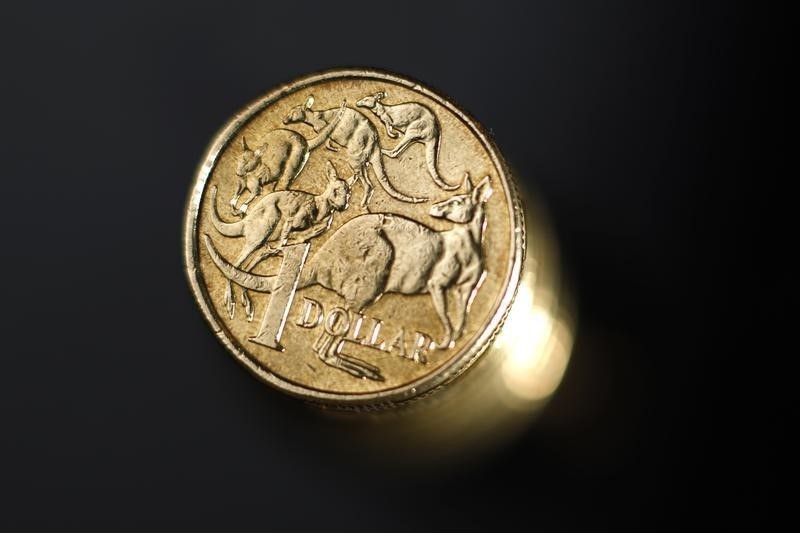By Cecile Lefort and Naomi Tajitsu
SYDNEY/WELLINGTON, Aug 27 (Reuters) - The Australian and New Zealand dollars were on a firmer footing on Thursday, as a sharp rebound in Asian stock markets and better than expected business spending plans in Australia encouraged buying.
The Australian dollar AUD=D4 rose to $0.7142, from $0.7110 early, pulling away from a 6-1/2-year trough touched on Monday. Resistance was found at $0.7155 where dealers cited stops. The Aussie regained some ground against the yen at 85.71 AUDJPY=R , having dropped to a low of 82.16 earlier in the week.
Wall Street's sharp bounce overnight had improved the mood.
But much of the strength came after China's Shanghai Composite index .SSEC bounced more than 1 percent and helped soothe investors' nerves after days of sharp losses and wild swings.
Also underpinning was a surprising, albeit slight, improvement in Australian capital expenditure plans for 2015/16 which came in on the high side of expectations at A$114.8 billion. Forecasts were for A$112.5 billion.
The overall report, however, was soft and reinforced the case for an interest rate cut by the Reserve Bank of Australia.
"When you look at global developments, in particular China, commodity prices, and implications on Australia's real economy, we would have to say that it fits into a picture whereby the case to cut is stronger," said Su-Lin Ong, a senior economist at RBC Capital Markets.
Interbank futures 0#YIB: were little changed after the capex data, having substantially narrowed the odds of further easing earlier in the week. They are fully priced for a 25-basis point-cut by January, from a less than a 50-50 chance last week.
The Antipodean currencies were hit hard this week on heightened concerns about a hard landing in the Chinese economy. The Asia giant is the top export market of Australia and New Zealand.
The New Zealand dollar NZD=D4 rose to $0.6460, from $0.6430 early, recovering from a drop to a six-year low of $0.6200 earlier this week.
The kiwi remains vulnerable to more losses if another bout of market volatility prompts risk-averse investors to dump the higher-yielding currency, while the prospect that New Zealand interest rates are likely to head lower in the coming months will chip away at its yield appeal.
Analysts forecast a fall towards $0.6000 before the end of the year with an opportunity to sell on a rise towards $0.6600.
Support was seen around $0.6403, the 61.8 percent retracement of the kiwi's 2009-2014 rally.
New Zealand government bonds fell, pushing yields as much as 8 basis point higher at the long end of the curve.
Improving risk sentiment dented appetite for Australian government bond futures, with the three-year bond contract YTTc1 off 6 ticks at 98.180. The 10-year contract dropped 9 ticks to 97.2300, leading to a bearish steepening of the curve. (Editing by Shri Navaratnam)
